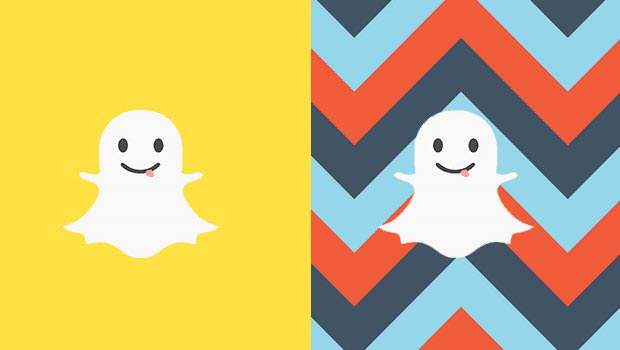What should your brand be doing on Snapchat?
The most important lesson of the age of social media engagement is that you go where your audience goes. If your audience is young, that means Snapchat. The photo chat (and more) app cites Nielsen figures to boast that 41% of the 18-34 demographic in the US engage daily. Overall, Snapchat claims over 100 million daily users watching more than 10 billion videos.
Snapchat is making a very serious push to become the next major brand marketing channel, and is rolling out new wrinkles for advertisers on a monthly basis. Sitting on the fence is going to sting—it’s time to figure out if Snapchat makes sense for your brand, or if it’s time to let the yellow-and-white ghost drift away.
We’re not even going to try to explain the highly symbolic world of engagement emoji and the appeal of the bizarro-world face-swapping filters. But here are a few of the need-to-know items for an app whose entire premise is based on a flash in the pan.
What to share on Snapchat
The easiest place to start on Snapchat is as an organic publisher. If you don’t know where to start, think of Snapchat as a place to expose the under-appreciated, under-nourished, or undercover aspects of your business.
“People want to follow things that set the brand apart. Behind-the-scenes information about what’s behind your brand or product is a good place to start,” says Jay Alson, general manager of Snapchat specialty agency We Now.
What to pay for on Snapchat
It costs nothing to be an organic publisher on Snapchat. Where Snapchat sets itself apart from many other digital ad platforms is in offering ad units in the form of experiences for your target audience. These come in two main shapes: lenses and geofilters.
Geofilters are overlays which can promote your brand and can be applied by any user within a target area you’re currently paying for. Lenses are more elaborate, and create real-time special effects such as interactive face-replacement and gesture-controlled applications.
Nationwide paid placement on Snapchat has typically commanded very serious money (starting at five figures) for runs as short as 24 hours. Alson recommends that smaller operators can rein in costs by being specific about their geographical targeting. So far, Snapchat only allows campaign targeting by location, not by demographic. But with careful timing and planning, catching students on-campus during move-in week, or professionals in a specific field by targeting their convention center during a big event.
“If you would otherwise have considered putting up a billboard or TV ad, you should be thinking about using those brand dollars on a paid Snapchat filter,” he says.
Sponsored videos between stories
Snapchat’s Stories feature lets users (individuals and brands alike) publish content which can be viewed an unlimited number of times in a 24-hour period, rather than self-destructing like the typical Snapchat payload. Snapchat has been experimenting with sponsored videos which play between stories, much as a Facebook or Twitter sponsored post pops up in the middle of a feed.
Alson recommends that his clients stay away from sponsored videos, focusing instead on organic content and saving advertising spend for lenses and geofilters. “A filter gets you someone who has chosen to engage and is fully focused on your brand,” he says. “Sponsored videos aren’t as effective for the same reason they’re not as effective on Facebook or Instagram—people know it’s sponsored, and skip it.”
Learn from the best
Social media celebrities love Snapchat because it’s so drop-dead easy to publish mixed-media content on. There’s no need (or ability) to fumble for the perfect set of hashtags. You just point, snap, and go. If you haven’t already tried following a few of the content leaders, it’s a great way to sample how Snapchat fits in to a broader social media scheme. Throughout the 24-hour cycle that Snapchat Stories content stays live, a brand or celebrity might drive engagement to a half-dozen other platforms for longer-form broadcasts or activities, then come back to Snapchat to give an instant debriefing to fans and followers.
Don’t wait for Snapchat to start looking like Facebook or Twitter
If you’re holding out for a click-to-buy mechanic on Snapchat, you’re in for a long wait. Snapchat’s current advertising vibe is all about exposure and engagement, not direct conversions. The platform lets people swipe up to create a longer engagement (such as more video content) but in general the experience is staying in-app and isn’t about closing a sale.
“Snapchat is still like TV in that regard, where what you’re buying is impressions,” Alson says.
Snapchat’s back-end insights are still not as rich and detailed as a conventional paid search or Facebook campaign might provide, but you do get some unique signals. Screenshots are recorded, and brands can use those as a signal to help focus more attention on viewers who are so highly engaged with your story or lens that they want to save that moment forever. (Or at least until they drop their phone.)






